The good thing about Qt (as a framework and technology) is that it powers so many interesting products seamlessly, quietly, unassumingly. The bad thing is, sometimes you may use something that has Qt DNA, and yet, you wouldn’t know it unless explicitly told. Such is the case with the Lumina desktop.
This less-known desktop environment powers mostly BSD operating systems, but it does not seem to have caught on in the Linux world that much. At the moment, you are most likely to find it gracing TrueOS, which uses it as its default interface. And yet, with modern architecture under the hood, it could be a suitable alternative to other mainstream desktop environments. Let’s see what gives.
Linux attempt, build your own
Sometimes, it is difficult to decouple the pure desktop environment experience from the distribution underneath, especially when the two come as a tight pair. For instance, Ubuntu + Unity make for a rather singular experience, and you can’t just separate the two without losing something in the process. This is why I wanted to try Lumina solo (Han Solo), before testing with TrueOS, which has a number of unique options and features that blur the distinction.
Lumina is available for a range of distributions. In most cases, you will actually have to grab build tools, satisfy a bunch of dependencies and then manually compile and install the software. My first attempt was with Xubuntu 17.04 followed by a Fedora 25 attempt. In both cases, the compilation stalled with an issue in the theme engine shared library (liblthemeengine.so), which is part of the Qt5 base package. So either there’s something wrong with the package, or some undeclared dependencies are missing, or there’s a bigger, compound problem at hand.
cd src/lthemeengine-qtplugin/ && ( test -e Makefile || /usr/lib/x86_64-linux-gnu/qt5/bin/qmake /home/roger/lumina/src-qt5/core/lumina-theme-engine/src/lthemeengine-qtplugin/lthemeengine-qtplugin.pro -o Makefile ) && make -f Makefile make[4]: Entering directory '/home/roger/lumina/src-qt5/core/lumina-theme-engine/src/lthemeengine-qtplugin' make[4]: *** No rule to make target '/usr/lib/x86_64-linux-gnu/libQt5PlatformSupport.a', needed by 'liblthemeengine.so'. Stop. make[4]: Leaving directory '/home/roger/lumina/src-qt5/core/lumina-theme-engine/src/lthemeengine-qtplugin' Makefile:44: recipe for target 'sub-src-lthemeengine-qtplugin-make_first' failed make[3]: *** [sub-src-lthemeengine-qtplugin-make_first] Error 2
I was not able to work around this problem. My next dilemma was to choose between TrueOS, as I was inclined originally, or maybe test with PC-BSD. Now you may recall my Joule review several years ago, with distinct hardware problems. And then, I have actually already tested Lumina, also in 2014, and this was to see how the desktop environment looks and behaves. You can see the impression and findings in my article, and it illustrates how Lumina cooperated with PC-BSD, in general. Which is why I decided to stay with my TrueOS choice.
This is an interesting operating system – BSD, yet capable of running Linux software, hopefully easier, more intuitive and familiar than PC-BSD, and you get a bunch of interesting, unique features, like the use of the ZFS filesystem and native support for fancy drivers. But then, this is not a TrueOS review, so I will try to avoid the tech creep and just focus on the desktop environment.
TrueOS & Lumina
The Lumina desktop environment has a rather spartan feel. It is very similar to the entire crop of desktops that were popular in the early 2000s, with a lightweight performance profile that comes at the expense of aesthetics. There’s a strong use of gradients, which don’t work that well, low-contrast and low-resolution icons, and a non-uniform styling that affects everything, from the system menu to the system area.
Right click anywhere on the desktop, and you have quick access to the system menu, so you don’t really need the would-be central function. Quite useful. You also have a relatively practical file manager, which comes with git repo functions built-in and split (dual) view. Then again, I was not able to turn the side pane off, nor connect to Samba shares. This indicates a limited capability set, especially if you compare to a fully-fledged Qt desktop like Plasma, which comes with almost all the bells and whistles you can think of.
At a first glance, it looks like an old-new desktop, similar to a range of other lightweight products. Similarly, in general, there are a lot of little glitches and bugs everywhere. The system menu does not have a uniform presentation layer. The TrueOS logo with the trademark icon also looks less than full-resolution. The system area seems to include several different icon types. Window resize only works if applied in the bottom right corner, and even then, you do not get a visual clue how your resizing is going to look like, so you must ‘drop’ the mouse cursor to see the effect.
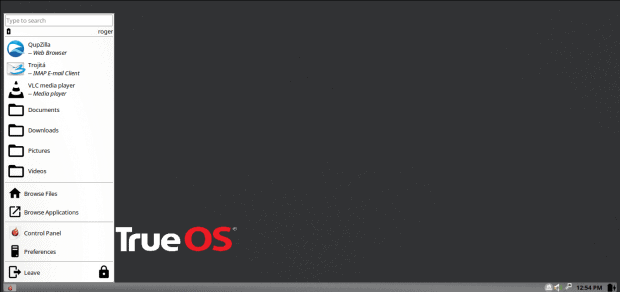
Notice the use of three different icon types and sizes: hi-res icons for applications from some cool and interesting set, a monochrome VLC icon that shows in color in the system area and the application windows list in the bottom panel, folder locations that are bigger than the browse icons just below, a PC-BSD icon for the Control Panel, a misaligned Places icon in relation to either the one above it or the Leave button just below; the menu also comes with a gradient that does not display well on a modern monitor; if you use arrow keys to move up and down between menu categories, there’s no indication this works, especially after a string search.
Desktop icons show in mixed resolution – for instance, the Firefox browser icon seems all fuzzy, as if taken from one icon sat (say 22px) but the Chromium icon looks rather reasonable, possibly because it was taken from a different set (like 48px or something). These icons did not change when I tried to customize the system, but more about that later.
Then, the volume mixer opened in the middle of the screen for some odd reason.
I was confused as to what the cloud-like icon in the system area does. Still not sure, to be frank.
The biggest, nastiest culprit through my testing was the terminal window. Now, it launched without any decorations, and refused to move, no matter what I did. It would also not close unless I explicitly typed the command ‘exit’ in the window. Then, it also remained always on top and monopolized desktop space and application prompts, so I wasn’t really able to use the system with the window open. File manager operations and screenshots wouldn’t really work. I had to do a few tricks to get things done.
On the other hand, the desktop environment does have a reasonable level of clarity, especially when you open some of its applications. Maybe it’s the minimalistic styling, maybe the window manager, or something else entirely, but there’s focus on black and white elements, which actually help locate things more easily and reduce the strain on the eye. The paradox of the old-modern design is notable in the text editor. On one hand, there’s some real fresh new sharpness there, and the simple layout is quite pleasing. But then, the lack of functionality and consistency, especially when compared to other programs and the desktop as a whole reduce the positive impact. In a way, it feels like a great idea realized only 64%.
Customization
I found this element of the desktop experience particularly frustrating. The main reason is, quite similar to LXQt, there isn’t one standard, uniform settings utility to help you govern and change everything. There seem to be at least three or four different ways to access and modify things, with different work flows as well as visual styling of relevant wizards and dialog boxes.
Wallpaper change is one example – adding new stuff is relatively easy, but then I never managed to scale the image down so it looks reasonably crisp on the display. I could focus on any which one corner, center or tile the image, but it would still be shown 1:1 scale. When you have a 3800x2600px wallpaper, it looks grainy when blown full size and displayed on a computer monitor.
I also noticed that the color of the battery indicator has changed, and I’m not sure if this is part of my theming attempts, or something more random. Speaking of how to edit themes and alike, this proved to be a rather complex process.
You have the following programs available to help you tame and configure your desktop – control panel, which seems mostly focused on the backend side of things, desktop settings, which lets you change how your system looks and behaves, and preferences, which lets you change several things on the fly, but also invoke the desktop settings utility, so there’s some recursion there.
Notice the uneven alignment of icons in the control panel. Notice the use of very decent black-and-white icons, which do not align to the default theme (Adwaita rather than hi-color), nor do they change if you change the icon set. The visual gaps are also quite noticeable.
When you make changes, you do need to save the settings, otherwise they will be lost. Some of the changes will be effectively immediately. Others require that you log out and log back in, or restart the window manager. I wasn’t able to fully decipher which one does which. For example, changing the theme did affect the bottom panel immediately, mostly in the form of different colors and gradients. But changing window decorations or icons required the full session cycle.
There are tons of decorations available – and very few icons, by default – and most of them have the square, angular feel of pre-KDE3.5. Again, this isn’t necessarily bad, but when you combine all the different archaic aspects, they harm the significant progress and the modernity of the technologies used to create the desktop environment. It’s almost a deliberate retro feel.
All that said, I was more confused than focused, pressing buttons randomly to see what does what, and I wasn’t always 100% sure what my changes did, and the occasional session logout actually made me lose track of all the little aesthetic games I was going for. In comparison, Plasma is so much easier to tame. It can be done on the fly, the effects are immediate, easily visible, or big enough to warrant the effort.
After changes
I spent a brief while trying to get Lumina into shape, and I did succeed to some small extent. However, it still looks rather old, even after a little bit of make up and polish. The system menu has a PC-BSD icon, if I’m not mistaken, and the system area combines icons from several different sets. The digital clock does not resize with the panel height. Notice the application list – a standard VLC icon plus a nice monochrome one, except there’s no uniformity at all.
Other aspects of the testing
I also realized that TrueOS had its share of influence in my testing. For instance, QupZilla, the chosen browser, struggled with even simple things. It showed as if the wallpaper download I was trying to grab were stuck, and yet the files had successfully downloaded, and I could use them without any problems. The package manager, AppCafe, worked fine, but it complained about timeouts and presented all sorts of comments in relation to my software installation. And yet, everything worked.
There are other nice things to be said about TrueOS – I tested in a virtual machine, because I wasn’t sure how ZFS would handle my multi-partition, multi-boot setup on the Lenovo G50 box, and I did not want to risk it. ZFS is also quite hungry, and it mentioned not caching or spooling or doing something on machines with less than 4GB memory. But then, it did correctly identify the virtual environment and offered necessary drivers, all this during the installation. The graphics side of things was also good. It’s brilliance and stone age combined. As evident below:
Comparison to PC-BSD findings from 2014
Now, here’s the really big issue – I do not see any major change in this desktop environment since my previous review. I know there have been a lot of subtle improvements under the hood, and a lot of focus on the functionality, especially with TrueOS, but on face value, as far as the common user is concerned, it looks and feels the same, and there isn’t too much room to appreciate the other improvements as the user gets stuck with the visual side of things. The common user, of course.
I am surprised, as there seems to be a lot of development invested in making this desktop environment work well, and TrueOS has some really interesting features. The screenshot tool, the text editor, its hardware handling wizards, all really nice. But then, the desktop environment tries to be excellent and yet defaults to old ways and modes that have no place in 2017. It’s been three years, and that’s a lot of time. On the other hand, the project has been around for a while, and marching boldly. That alone is already a decent sign.
Conclusion
Do I find Lumina useful or ready for day to day stuff? No, far from it. As a whole, it feels like all other desktop environments below the popular tier: it has its moments of genius and fun and brilliance, but it fails on a range of small things, an infinite pool of papercuts that harm the consistency of experience. It is also very difficult to customize, as there’s no standard, common approach to how it should be managed. Styling wise, it’s also rather archaic, but then taste is a subjective thing.
Compared to the 2014 experience, there are some improvements, but they aren’t big or noticeable enough. You will struggle to appreciate all the hard work the team has invested. The core issues remain. It’s not pretty or easy enough to wow and delight at first sight. Functional yes, light on the resources yes, but ultimately too complex in its own simplicity. So I guess it’s going to be another round before we can see Lumina take off. If ever. My skepticism from three years ago remains. This is a cool project, but it doesn’t have the focus and the sizzle to blind us with beauty.
[sharedaddy]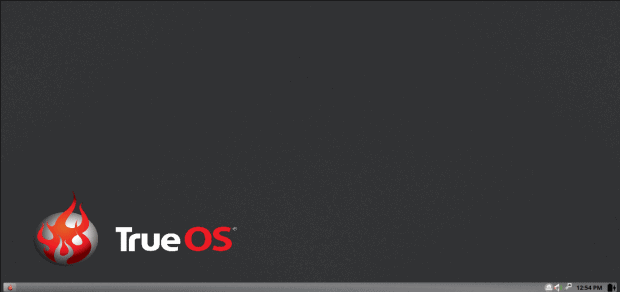

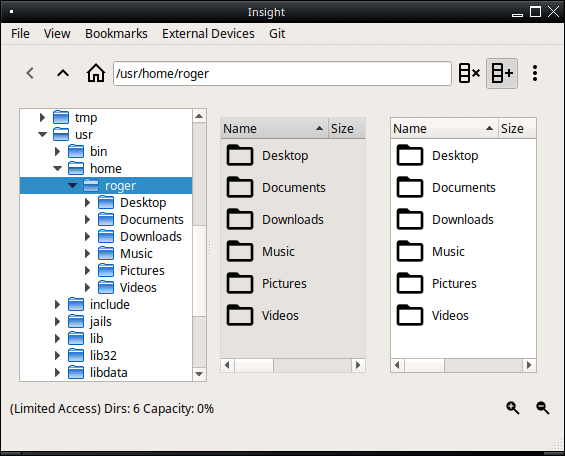
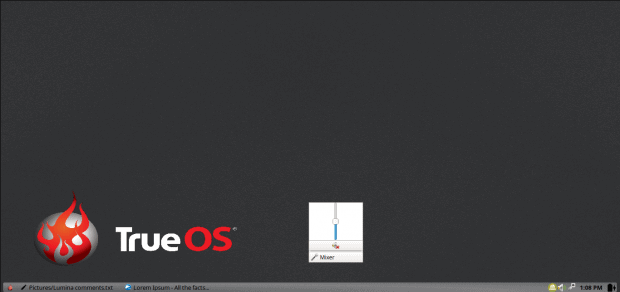
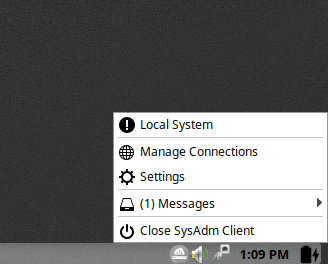
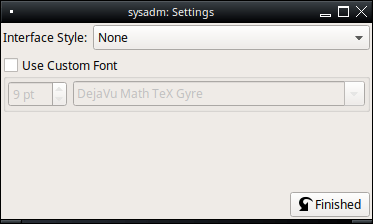
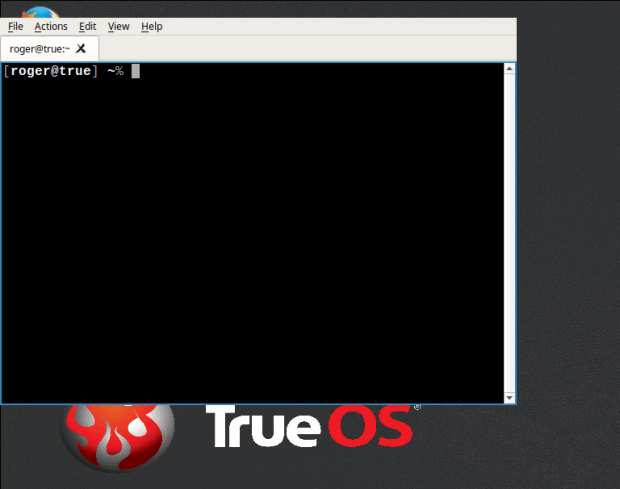
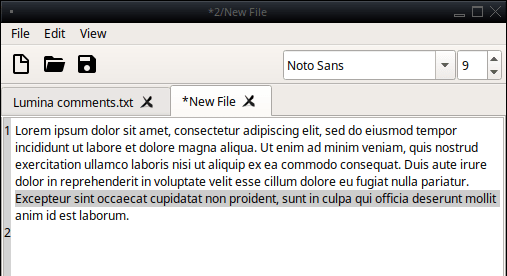
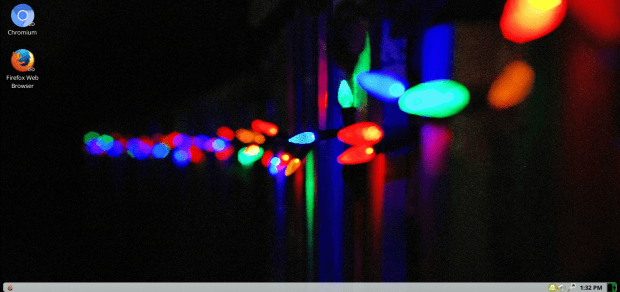
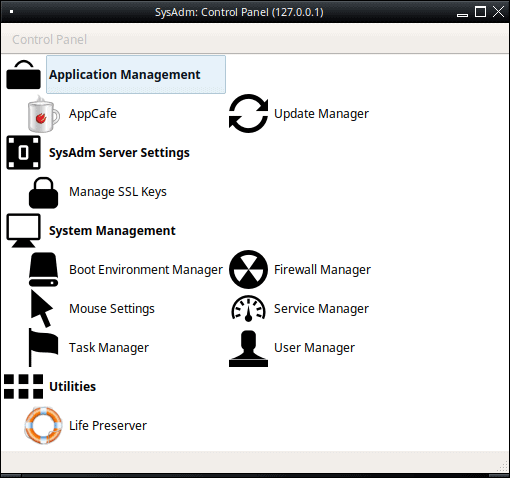
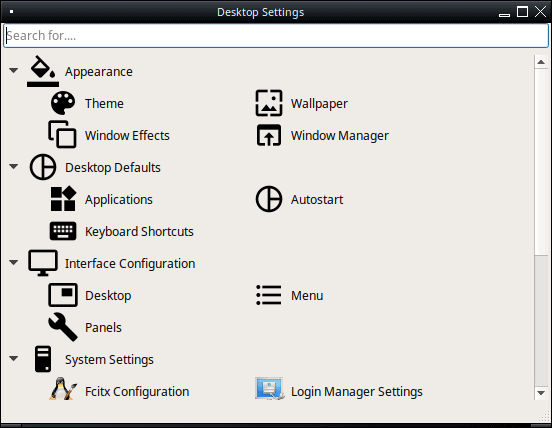
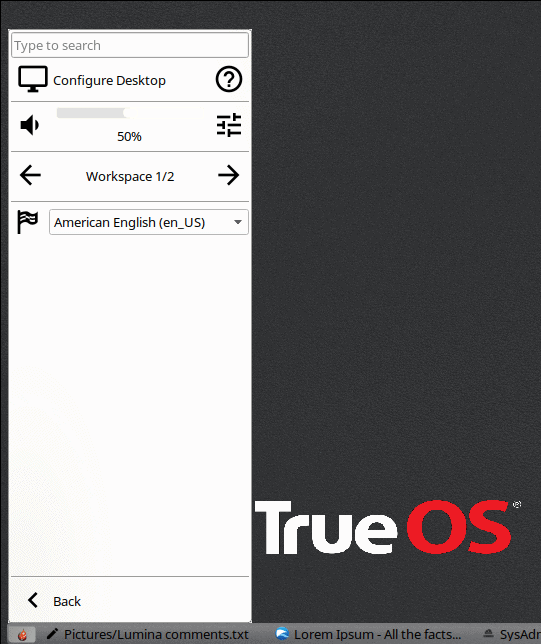
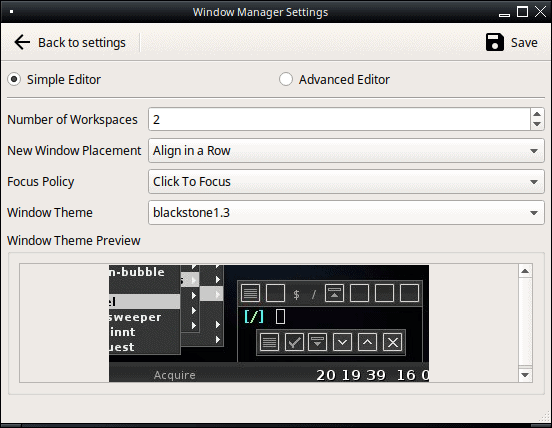
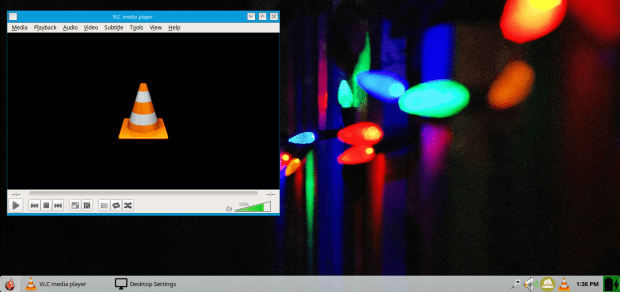
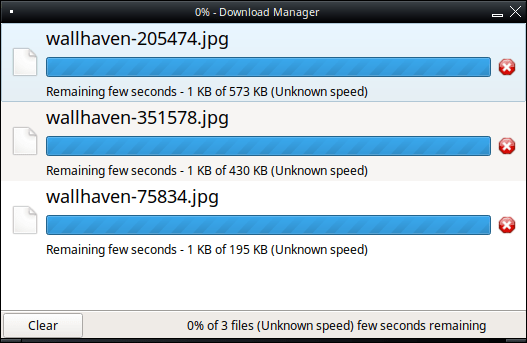
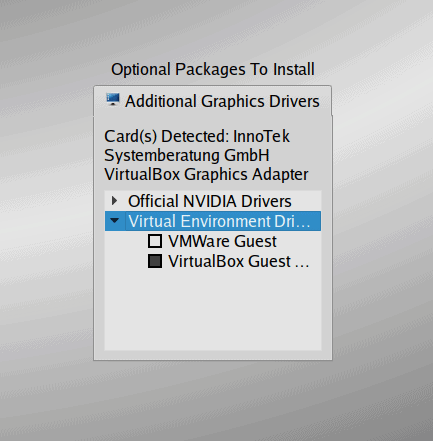
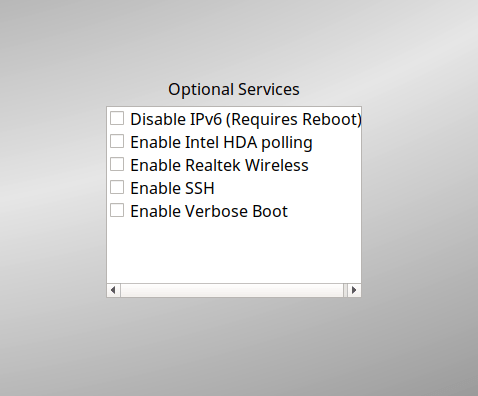



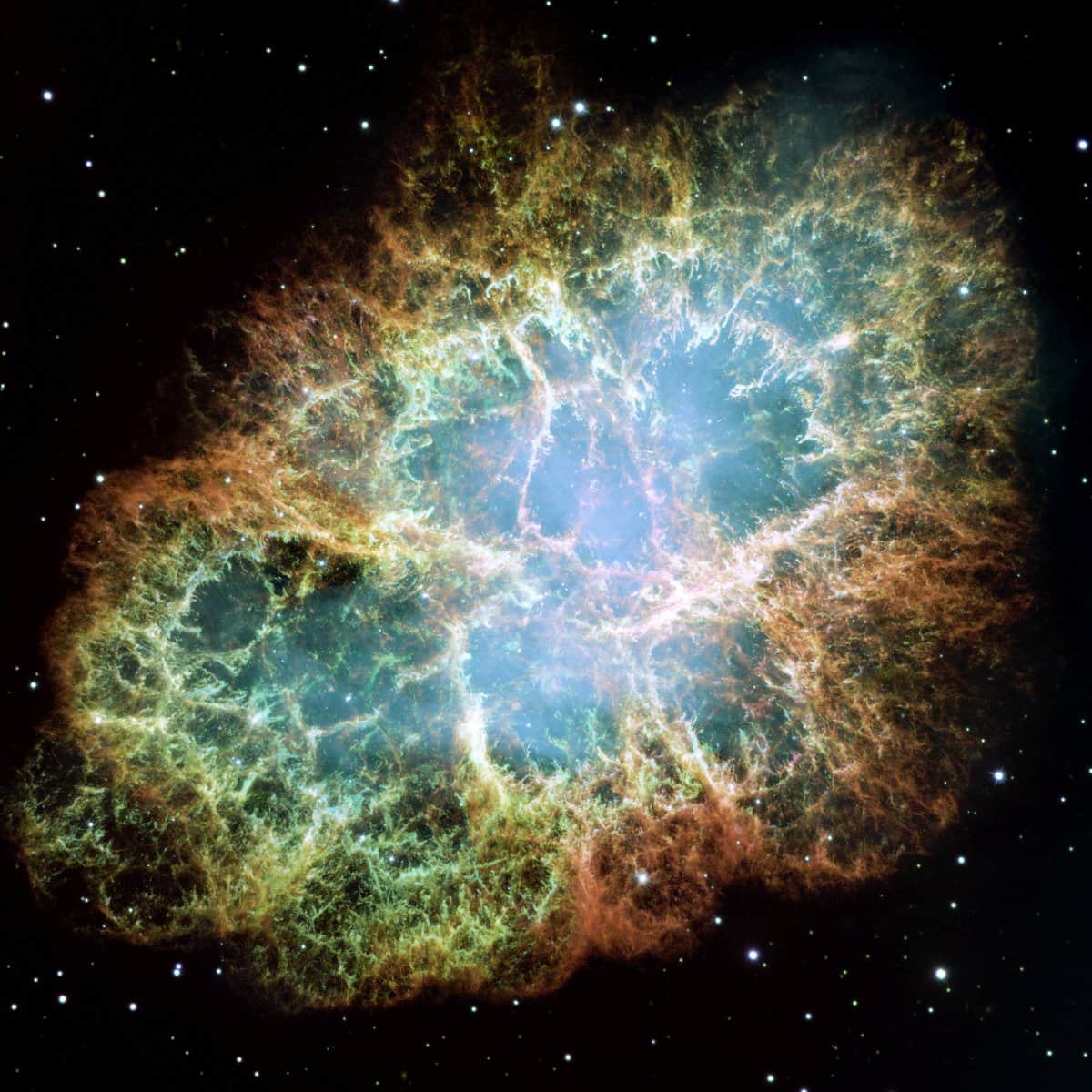
Tried once TrueOS, it was a total mess… Slow, inconsistent, incomplete, memory hog (it was almost unusable on my 2GB ram PC)… Even KDE5 which is famous for its instability and not so good consistency is in leaps and bounds better. Just don’t waste time on it.
I’m running it now and it’s performed quite well. How long ago did you use it? Just because it performed poorly for you once, doesn’t mean it will for everyone else. Did you report the problems? They can’t be fixed if the devs don’t know about them.
I’d like to clarify two things.
1. The article makes it sound like PC-BSD and TrueOS are two separate projects. (“My next dilemma was to choose between TrueOS, as I was inclined originally, or maybe test with PC-BSD.”) But TrueOS is PC-BSD, the project just changed its name. It’s the same developers, the same OS, just new branding.
2. Most Linux distributions have Lumina binary packages these days, either in the main repos or in popular community repositories so there is almost never a need to build from source. Fedora, Arch, Slackware, Debian & Void all have Lumina packages, if not in their main repo then in AUR or Copr.
I just want to clarify something. TrueOS is PC-BSD. They switched to a rolling release model, are based on FreeBSD current, and had a few other changes. TrueOS historically was the server edition of PC-BSD.
I ran PC-BSD many, many moons ago. It was my first real introduction to the *bsds. Something about the system still calls to me. I guess it was the underlying bsd roots. The documentation was incredible, compiling from source was a learning experience (but I grew tired of this as I love to download and test lots of software).
Still… appreciated the cohesiveness of bsd. I may try TrueOS at some point in the future. I just wish they stuck with a tried and tested desktop. Something that has gone through the dev cycle and has most features built-in. Lumina, it seems, will continue to grow until eventually it’ll be similar to what’s already out there.
TrueOS with Xfce is still an option. I did the default install and after a few hours of Lumina, I added Xfce, rebooted, and was home again.